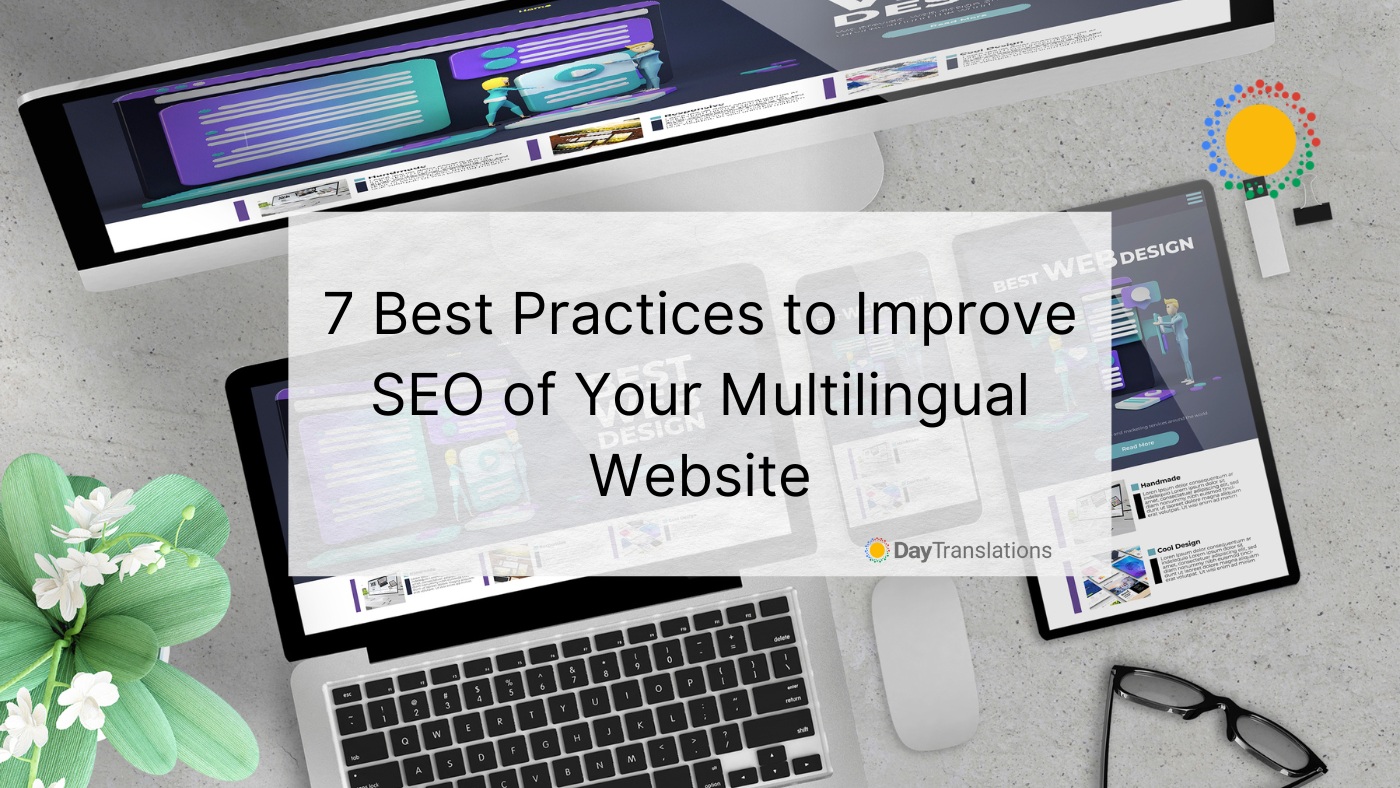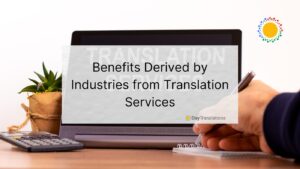In today’s globalized world, having a website that speaks to people in their native language is essential, especially if you’re a business owner trying to expand beyond borders. By adapting your site’s language to different locations and audiences, you can reach a wider range of people, which can be beneficial for both company growth and customer satisfaction. Then again, launching a multilingual website isn’t enough. You need to optimize it for search engines to ensure it ranks high enough for your target audiences to find it. In other words, you need SEO.
With the right search engine optimization strategies in place, you can expect your website to rise higher up in Google and other search engines. Prospective customers from all over the world will find it easier to find you as they’re searching for businesses like yours. This means more traffic, more leads, and, ultimately, more conversions.
The question is, how do you go about doing it? How do you improve the SEO of your multilingual website to ensure it attracts the right folks? Well, you better stick around as we explore some of the best SEO practices here!
From using language-specific data to researching popular keywords in other dialects and optimizing your website’s structure, we’ll cover all the essential steps you need to take to boost your website’s visibility and ranking on search engines.
7 Simple Steps for Boosting the SEO of Your Multilingual Website
#1 – Implement Hreflang Tags
Hreflang tags basically tell search engines which language and region your web pages are targeting. By adding them to your multilingual site, you’re helping crawlers understand your content better, leading to higher search rankings and more traffic.
What’s more, hreflang tags tend to improve your site’s user experience (UX) by presenting the appropriate language version of the content to users in their respective nations. Your web visitors will find it navigating your site extremely convenient and discover content they’re looking for, thus increasing engagement and satisfaction.
So, how do you implement hreflang attributes to your website? Follow these steps:
- Identify the language and region codes for each language version of your web pages. You can find these codes by consulting the ISO language and country codes list or ng an online language code tool.
- Add the hreflang tag to the head section of your HTML code for each page. Here’s how you can add the tag for the Spanish version of a page targeting Mexico: <link rel=”alternate” hreflang=”es-MX” href=”http://www.example.com/es-mx/”>
- Repeat step two for each language version of your web pages. See to it that you use the correct language and region codes for each version.
- Verify your hreflang tags using the Google Search Console or another SEO tool to check that they work properly.
The thing about hreflang attributes is that implementing them can get really complicated, especially if you’re targeting many languages and regions. Unless you have a good background in SEO, you might as well enlist the help of a digital marketing agency, or if you’re in the software industry, a SaaS marketing agency specializing in multilingual SEO.
#2 – Use Localized URLs
Each of your country pages should have its own URL so search engine bots can efficiently crawl, index, and rank every single one of them. This is where using localized URLs comes in handy.
Localized URLs are web addresses that use language and region-specific words to represent the content of a certain page. They’re there to help search engines identify the language and region of the content on a web page, making it easier for them to rank the page in relevant search results.
Let’s say you have a website, www.mybusiness.com, and you intend to target people in Italy. For that to happen, you’ll want to have a separate page with the URL www.mybusiness.com/it/.
You should know, though, that there are actually three URL structures you can choose from:
- Top-level domain: mybusiness.it
- Subdomain: it.mybusinesscom
- Subdirectory: mybusiness.com/it/
While each has its own strengths and weaknesses, many SEO specialists agree that subdirectories are easiest to set up and maintain.
#3 – Utilize Language-Specific Metadata
Each page of your website contains plenty of elements that aren’t visible to users since they’re solely intended for search engines. These elements – which comprise of meta descriptions, tags, image alt text, error messages, and checkout pages – are collectively known as metadata.
Translating your multilingual website’s metadata plays a vital role in generating more traffic from users in other languages. Otherwise, your pages won’t rank high in languages besides English. Focus more on the metadata and metatag titles since they’re what users see in search results. In other words, they tell your audience what your content is all about. You can also increase conversion rates by implementing strategies such as analyzing your existing customer journey, A/B Testing, incremental testing, and many more.
Translate as many metadata elements as you can. It may take a lot of time, but your efforts will definitely pay off. Before you know it, your site will crawl its way up in search results for your chosen languages.
#4 – Choose Location-Based Keywords to Boost the SEO of Your Multilingual Website
Keywords are the foundation of SEO. Using keywords that are relevant to your business or industry is key to improving your online visibility and to outrank your competition on Google. That’s why it makes perfect sense to conduct keyword research for each language and location your site is targeting.
For instance, if you’re trying to attract the French population, using French-specific keywords will be a lot more effective than using generic keywords that don’t speak to their culture or language. Your site will definitely grab their attention, keep them engaged, and eventually encourage them to convert.
Start by researching the most common location-based keywords your target audience uses to search for your products and/or services. Tools like Google Keyword Planner, SEMrush, and Ahrefs can help make your life easier.
Once you have your list of keywords, spread them evenly throughout your website and pages. They should be in your title tags, meta descriptions, headers, body content, and anchor texts. Make sure that you use them naturally, as keyword stuffing can lead Google to penalize your website with a lower ranking.
#5 – Stick to One Language for Each Page
Using one language per page helps search engines understand the content and structure of your site, which means they won’t have a hard time indexing and ranking your pages in relevant search results. It also enables you to target specific languages and regions more effectively.
Plus, creating content in a user’s native tongue can do wonders to your conversion rate. Your visitors are more likely to take action when they feel more comfortable and familiar with the culture of your website. For those looking to enhance their multilingual website further, converting PSD to HTML ensures that the design translates effectively across different languages and cultures, maintaining the visual integrity and user experience of your site.
On the other hand, combining multiple languages on a single web page can only confuse search engines. They’ll have trouble recognizing the language of your content, which in turn, can harm your SEO efforts.
#6 – Create High-Quality Content in Each Language
Crafting unique and engaging content using your target languages not only improves your online visibility, but it also shows your audience that you’re making an effort to reach out to them. This gives them the notion that you truly value their culture, providing them a reason to support your business.
Unless you’re very fluent, we suggest you hire a team of professionals who are knowledgeable in multiple languages and possess the skills involved in content creation. Then again, since this option would usually cost a fortune, working with freelance translators might also do the trick if you’re tight on budget.
Also, as much as you may be tempted to use automated translation tools, don’t. Although these tools can certainly save you time, they often produce content that’s grammatically incorrect, culturally irrelevant, or confusing to readers.
#7 – Build Quality Backlinks to Improve the SEO of Your Multilingual Website
Think of backlinks as a vote of confidence from other websites. That said, backlinks of greater value are more impactful to your website. When a website, particularly one with a high domain authority, links to your content, it’s telling search engines that you’re a trustworthy business. This can only mean one thing: better rankings!
Guest blogging is the easiest way to build backlinks for your multilingual website. Reach out to some of the most influential bloggers or websites in your niche and volunteer to write a guest post. Once they give you the green light, create content that resonates with their audience and include a link to your website within the post or in your author bio.
Understanding how to outsource link building effectively can further enhance this strategy, providing a streamlined approach to acquiring quality white-hat backlinks from diverse sources. Partnering with an SEO link building focused company can be a strategic move, offering expertise in building a strong backlink profile that complements your multilingual SEO efforts.
Another tried-and-true strategy is to create visually appealing and informative infographics related to your industry. Share them on social media or ask your loyal customers to do the same. Don’t forget to add a link back to your site.
Wrapping Up
There’s no denying that SEO has become necessary for businesses of all sizes and industries. The so-called SEO evolution has now reached brands that cater to a global market, helping them reach prospects from all over the world through virtual means. Implement these best practices, and you’ll be on your way to becoming an international name!












Sorry, the comment form is closed at this time.